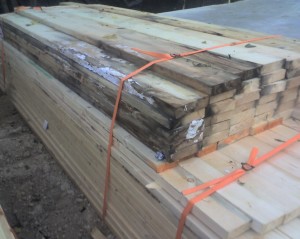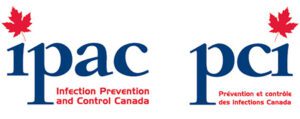Mold growing on new homes under construction
Mold growing on new homes under construction
During my travels I am constantly dismayed at the number of instances where I see mold growing on new homes under construction. As a professional in the industry I get to visit many existing and newer homes because the owner has called me into take a look at potential mold problems that have formed due to a number of situations. However, one of the most understated reasons for mold growth in a new home is because mold was allowed to grow on the exposed wooden structure of the home as it was being built.
No thought was given to protecting or treating the structure, even by simply covering the materials waiting to be assembled, covering the structure as it’s being built and / or drying the structure out thoroughly before the interior build out has started.
Future indoor air quality is directly affected by the amount of diligence you apply during the design / construction phase of the home.
https://mapleleafmold.ca/are-you-worried-…omes-air-quality/.
https://mapleleafmold.ca/is-hidden-mold-a…-making-you-sick/
Why isn’t this being addressed either through a building code or through other legislation?
As a certified mold inspector / home inspector and general contractor, unless the area under construction is shielded from the elements, (and not just when it’s cold outside), moisture and resulting mold growth will occur. This includes interior and exterior building systems and not just through the use of a vapour barrier or exterior sheathing system.
This must be controlled in order to prevent moisture from entering into the structure at all times during the construction until both exterior cladding systems and glazing units have been secured according to manufacturers direction as well as in compliance with all building codes. This includes materials that have been stored offsite prior to arrival on the site and materials stored onsite prior to final use.
Water, when it enters into a building under construction, gets drawn into the dry wooden support structures, cladding and secondary interior wall structures easily through capillary action, https://en.wikipedia.org/wiki/Capillary_action.
Moisture then becomes very difficult to address, requiring many hours of ventilation through the introduction of fans, dehumification systems and heaters. And this must be done within 24 – 48 hours from the initial moisture intrusion or mold will grow.
What Can I do should I see a lack of moisture control on my home currently under construction?
The architect or certified project manager in charge of construction of your building should be well versed when it comes to preventing moisture intrusion into building under construction, (if they aren’t you’re using the wrong designer / constructor). By following these recommendations mold growing on new homes under construction would be significantly limited.
Due diligence should be undertaken to insure compliance with an anti-mold protocol guideline whenever new materials are being supplied and used. Your designer / project manager should confirm proper manufacturing, handling / transport and storage techniques are in place and that no installation takes place during inclement weather and to insure proper drying processes are ready and in place should materials become wet due to unanticipated weather conditions.
During construction the design of the structure is key in understanding where potential moisture intrusion may lie before they take place.
A number of key areas that should be reviewed on a regular basis include;
- Areas where poor drainage may exist, the type of whole-building moisture protection being used, contingency plans should moisture enter the buildings, (including adequate drying techniques as outlined in IICRC ANSI / S500 guidelines, https://www.iicrc.org/page/IICRCStandards )
- A clear mandate that states that moisture intrusion will not be tolerated on the job site. The old standard of building without considering the implications of mold-growth on human health will not be tolerated.
- The design of the building itself is key in avoiding future moisture-related issues.
- Benchmarks should be established for moisture content within building materials before, during and after construction. These benchmarks must be measured and documented prior to the interior build out phase of construction while all areas are exposed.
- Humidity Control should be employed on a site under construction.
- Specifying the use of mold resistant building materials rated as safe here in Canada
Architects / Builders should be aware of recent legal decisions surrounding a wilful lack of moisture control on a job site
Claims in the United States have exceeded $11 million dollars against an architect, construction manager and various sub-trades both in Florida and California.

Be Proactive, not Reactive
Moisture control response guidelines should be in place prior to the first piece of wood being ordered.
Emergency ventilation fans, (correctly rated), dehumidification units, heaters, wet / dry vacuum systems and water pumps must be on site at all times and individuals certified in their use be present. Profession drying technicians, (such as an individual certified under the IICRC WDT program), should be called in to help clean up and direct corrective actions. Such technicians are used to help manage a clean up after a catastrophic moisture event and to prevent any future mold growth.
Maple Leaf Mold Inc has successfully managed active moisture incursion and mold growth during construction projects ranging from residential homes and hotels to multi-floor healthcare buildings, and can assist building owners, contractors, construction managers and architects in developing proactive plans for the control of moisture and mold growth and reduce your liability potential. We can also perform proactive inspections, assess the potential for hidden mold growth and develop remediation plans should mold growth occur.

Maple Leaf Mold Inc. is a certified mold / asbestos removal and biological disinfection / air analysis company located in Toronto that uses certified IICRC technicians for all testing and remediation projects.
We are a professionally licensed firm experienced in testing, verifying and removing Mold / Asbestos / Lead and other environmental contaminants as well as providing disinfection services to control and kill biological contaminants.
Call 416-254-7256 to talk with us about your issue anytime.




 Certified Residential / Commercial Inspection Service
Certified Residential / Commercial Inspection Service
